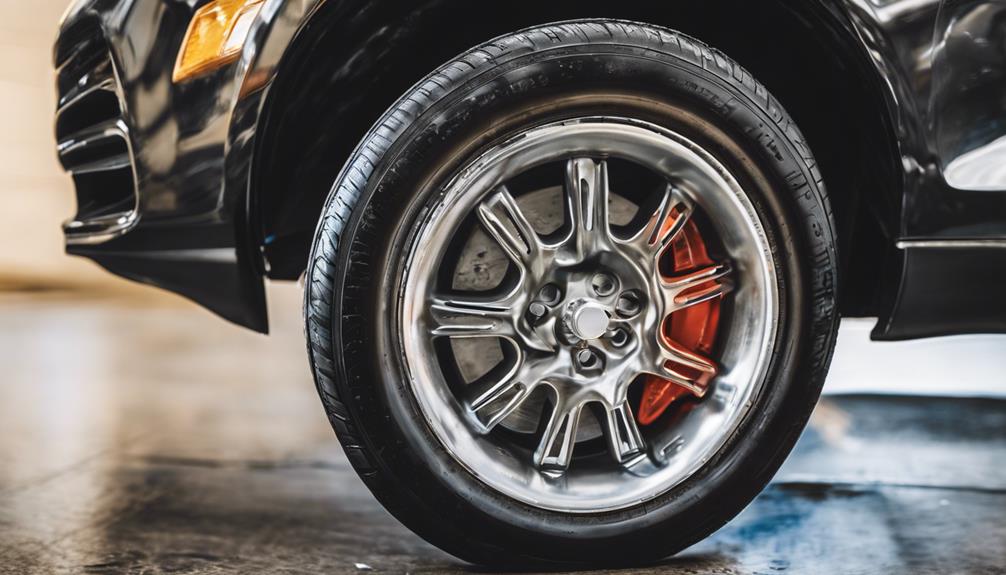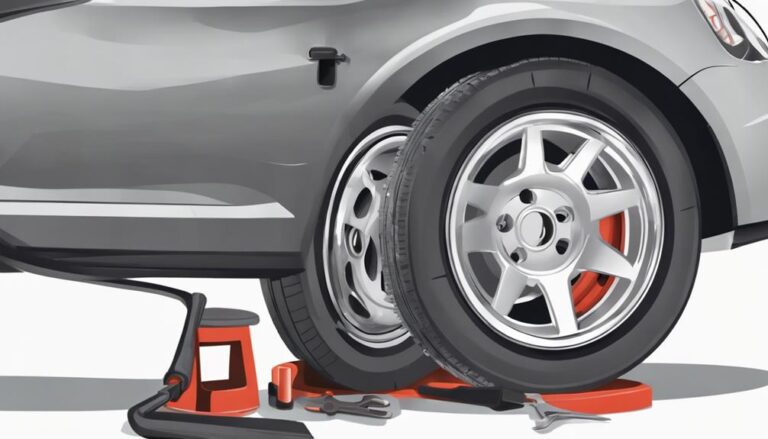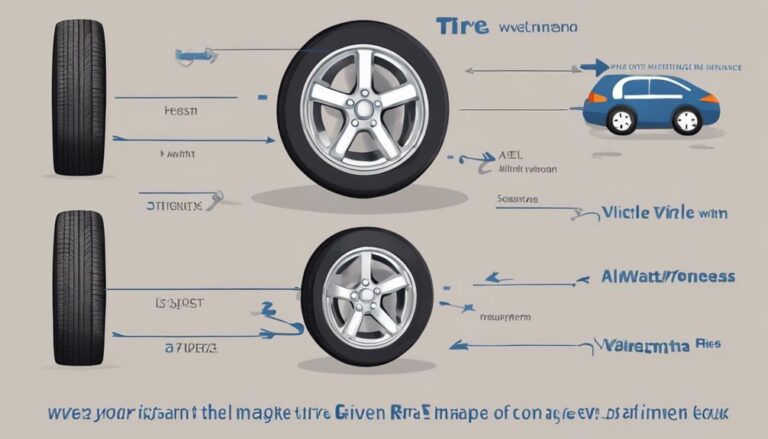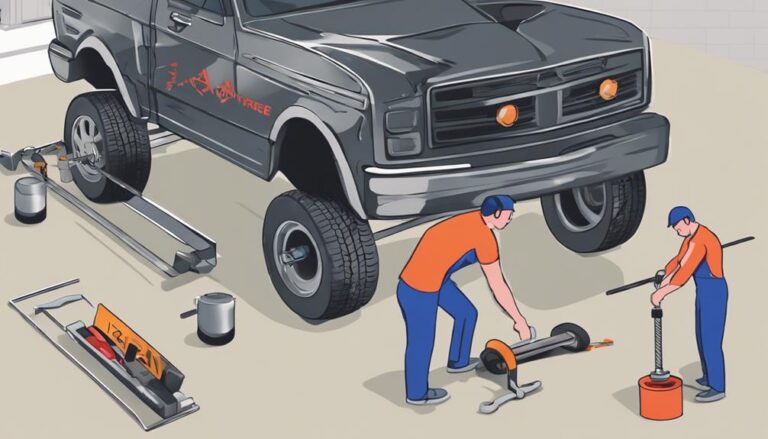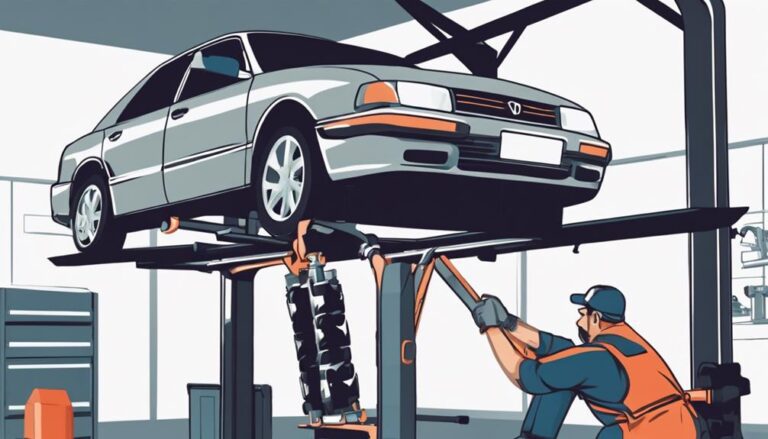5 Best Practices for Performance Car Tire Maintenance
You might think that maintaining performance car tires is a hassle, but with these five best practices, it's simpler than you think.
From tire pressure to rotation and alignment, each step plays a crucial role in ensuring your car's performance and safety.
Stay tuned to discover how these practices can benefit not only your tires but also your overall driving experience.
Key Takeaways
- Maintain proper tire pressure for fuel efficiency, safety, and performance.
- Rotate tires regularly to ensure even wear and maximize longevity.
- Balance tires precisely to minimize vibrations and enhance handling.
- Align tires for uniform contact, preventing premature wear and ensuring optimal performance.
Proper Tire Inflation
Ensuring your performance car tires are properly inflated is crucial for maximizing fuel efficiency, enhancing vehicle handling, and extending tire lifespan. Tire pressure directly impacts your car's performance. Incorrect inflation levels can lead to various issues.
Underinflated tires not only decrease fuel efficiency by up to 3.3% but also pose a safety risk, increasing the likelihood of accidents and reducing tire lifespan by 25%. On the other hand, overinflated tires result in a harsher ride, reduced traction, and uneven wear patterns, affecting both comfort and safety.
Properly inflated tires play a significant role in enhancing braking distance and overall vehicle handling, giving you more control on the road. Maintaining the right tire pressure isn't just about performance but also about safety. Regularly checking and adjusting your tire pressure to the manufacturer's recommended levels will ensure optimal performance, longevity, and safety for your performance car.
Regular Tire Rotation
Maintaining the proper rotation schedule for your performance car tires is essential to ensure even wear and maximize their longevity and performance capabilities. Regular tire rotation helps promote even wear across all tires, extending their lifespan. It's recommended to rotate performance car tires every 5,000 to 7,500 miles for optimal performance.
Following the manufacturer's rotation guidelines can improve traction, handling, and overall vehicle control. Proper tire rotation can prevent premature wear on specific tires, ensuring balanced performance. Consistent tire rotation is essential for maintaining the high performance capabilities of performance car tires.
- Enhances Tire Traction: By rotating your tires regularly, you ensure that each tire maintains optimal traction on the road.
- Improves Vehicle Handling: Proper tire rotation enhances your car's handling capabilities, allowing for smoother and more controlled driving experiences.
- Maximizes Tire Longevity: Regular rotation based on tread analysis and rotation frequency helps maximize the lifespan of your performance car tires, ultimately saving you money in the long run.
Precision Tire Balancing

To achieve optimal performance and ensure a smooth driving experience with your performance car tires, precision tire balancing is crucial. Precision tire balancing involves equalizing the weight distribution around the tire and wheel assembly using advanced technology. This process minimizes vibrations, enhances ride comfort, and improves handling, especially at high speeds. By preventing uneven tire wear, precision balancing also extends the lifespan of your performance tires, saving you money in the long run.
When professional technicians balance your tires, they employ advanced equipment to achieve precise balance, ensuring your tires function at their best. Regular tire balancing is essential for maintaining the performance and safety of your high-performance vehicle. Check out the table below to see the benefits of precision tire balancing:
| Benefits of Precision Tire Balancing |
|---|
| Equal weight distribution |
| Minimized vibrations |
| Enhanced ride comfort |
Alignment for Even Wear
Achieving proper alignment for your performance car tires is crucial to promote even wear and maximize tire longevity. Maintaining alignment benefits your vehicle in several ways:
- Optimal Tire Performance: Proper alignment ensures that each tire makes uniform contact with the road surface, enhancing handling and overall performance.
- Enhanced Safety: Misaligned wheels can lead to uneven tire wear, affecting your car's ability to respond to steering inputs promptly and compromising overall safety.
- Cost-Effective Maintenance: Regular alignment checks prevent premature tire replacement due to uneven wear, saving you money in the long run.
Performance Tracking and Monitoring

For effective performance tracking and monitoring of your performance car tires, utilize data analysis tools and online tire management systems to ensure optimal tire lifespan and efficiency. Real-time monitoring of tire load, vehicle speed, and maintenance checks is essential for peak performance. Collecting data on tire service hours enables predictive maintenance and budget planning for timely replacement tires. Utilizing an online tire management system for data analysis enhances performance tracking by providing insights into tire usage patterns and wear rates. Monitoring tire performance not only ensures efficient usage but also maximizes tire lifespan by identifying potential issues early on. Tracking TMPH ratings and vehicle movement aids in ensuring tires operate within their load capacity, promoting safety and longevity. By leveraging data analysis and real-time monitoring, you can proactively manage your performance car tires, maximizing their performance and durability.
| Performance Tracking and Monitoring | ||
|---|---|---|
| Real-time Monitoring | Data Analysis | Predictive Maintenance |
| Budget Planning | Tire Lifespan | Efficient Usage |
Frequently Asked Questions
How Do You Break in New Performance Tires?
To break in new performance tires properly, you should gradually increase speed and distance over the first 500 miles. Avoid sudden accelerations, hard cornering, and aggressive braking. This allows for proper heat distribution and optimal tire pressure.
What Are the Maintenance Tips for Car Tires?
Ensure optimal tire pressure for peak performance. Rotate regularly for even wear and longer lifespan. Balance to prevent vibrations. Inspect for damage. Maintain alignment to reduce wear and enhance handling. Prioritize tire care for safety and longevity.
How Often Should You Perform Maintenance on Tires?
You should perform tire maintenance on your performance car tires at least once a month. Regularly check tire pressure, rotate, align, balance, and inspect tread depth. Following these practices will ensure optimal performance and longevity for your high-performance tires.
What Is the Most Important Task in Tire Maintenance?
You must prioritize checking tire pressure regularly. Neglecting this crucial task can lead to safety risks, premature wear, and handling issues. Proper pressure ensures optimal performance, fuel efficiency, and overall driving comfort. Alignment maintenance is also vital for peak performance.
Conclusion
In conclusion, following these best practices for performance car tire maintenance is crucial for maximizing performance and safety.
While some may argue that regular maintenance can be time-consuming and costly, the long-term benefits of improved handling, extended tire life, and overall vehicle stability far outweigh any inconvenience.
By prioritizing tire maintenance, you can ensure your performance car operates at its peak potential for years to come.

